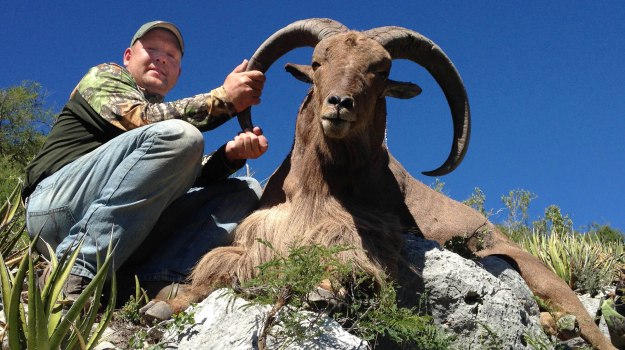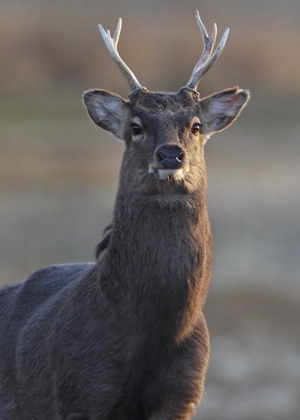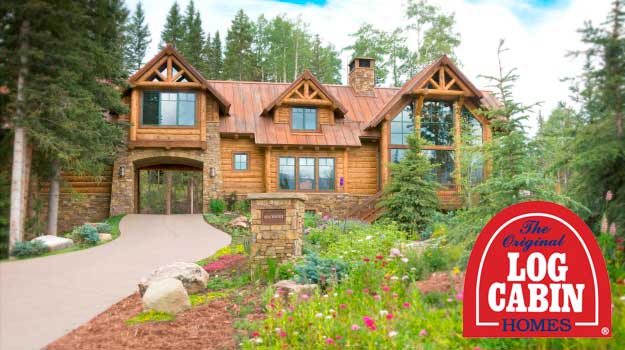
Editor’s Note: Les Motheral has been a Mossy Oak Pro for the last 4 years, lives on the north side of Fort Worth, Texas, and has been hunting whitetails for 30 years. He’s a whitetail guide at the Monarch Ranch. When we asked Motheral to name his favorite Mossy Oak pattern, after a long pause, he said. “I wear different patterns, depending on where I'm hunting, the time of the year and the game I'm hunting. Each Mossy Oak pattern is really designed for a different purpose and a different type terrain. Probably, the pattern I use most often is Break-Up, because it’s a more-versatile pattern than some of the other patterns.”
There's good news and bad news about hunting exotics in Texas. The population is tremendous. The words, free-ranging, mean these animals don’t live behind fences, but most if not all of the ranches where you find exotics are privately owned. You must have permission to hunt there, and/or on leased lands or hunting operations. Also, Texas homes numbers of enclosures used to raise trophy whitetails. So, I define free-ranging as those animals that are able to cross low fences, go wherever they want to go and aren’t restricted by high fences.
 Another factor that interests a lot of people - myself included - is that there is no closed season on exotics in Texas. They can be hunted year-round. However, most landowners only allow the hunting of exotics during white-tailed deer season. I'm often asked, “How did Texas get so-many different species of exotics that are free ranging?” Except for the Barbary sheep - the aoudad - and the Spanish goats, most of the exotic animals in Texas were brought in from overseas and kept in enclosures. However, we often have major floods and other natural disasters here in Texas that tear down fences, and these exotics have escaped over many years. They’ve thrived and spread out onto properties that aren’t high-fenced.
Another factor that interests a lot of people - myself included - is that there is no closed season on exotics in Texas. They can be hunted year-round. However, most landowners only allow the hunting of exotics during white-tailed deer season. I'm often asked, “How did Texas get so-many different species of exotics that are free ranging?” Except for the Barbary sheep - the aoudad - and the Spanish goats, most of the exotic animals in Texas were brought in from overseas and kept in enclosures. However, we often have major floods and other natural disasters here in Texas that tear down fences, and these exotics have escaped over many years. They’ve thrived and spread out onto properties that aren’t high-fenced.
Another question I'm asked too is: “Why does Texas have so many trophy whitetails not only in high-fenced areas but also in low-fenced areas?” Also when floods, high winds, tornadoes and other natural disasters move through Texas, they tear down fences where large whitetail bucks have been bred for many years. Those bucks escape, and they’ve spread out all over Texas, carrying their genetics throughout much of the state, especially in south Texas. This is one of the reasons that you find big trophy bucks in low-fenced places. Another reason is that Texas ranchers have been on the leading edge of white-tailed deer research in age, structure, genetics, nutrition and harvest. For many, many years, Texas ranchers have done what they’ve needed to do to produce large numbers of trophy bucks.
Just about everyone who comes to hunt in Texas is interested in the number, size and location of our exotic animals. Although our exotic population continues to grow, the largest number of exotic animals is located in the south/central portion of the state. More or less south and west of Austin is where you'll find a higher population of free-roaming exotics.
I'm not excited about exotic animals being hunted all year long. However, as I’ve mentioned earlier, our exotic population has been allowed to grow, because most landowners restrict the harvest of exotic animals until the white-tailed deer season. Even though our exotic animals have no closed season, they’ve been accepted in Texas as game animals. That’s why landowners have restricted harvest on their lands, due to the growing number of hunters who come to Texas and want to hunt exotics. We also have a growing number of hunters who want to come to Texas to take whitetails. While they’re on whitetail hunts, if they have an opportunity to take exotic animals, they will.
Day 1: Hunting and Eating Texas’ Free-Ranging Exotic Animals
Tomorrow: Hunting the Free Ranging Axis Deer, Fallow Deer and Nilgai of Texas




























